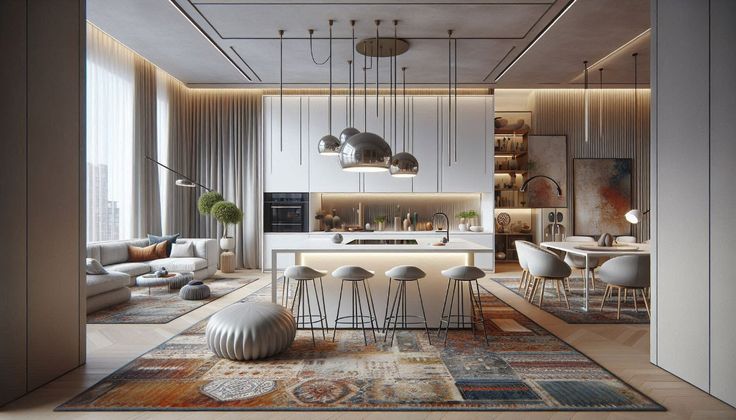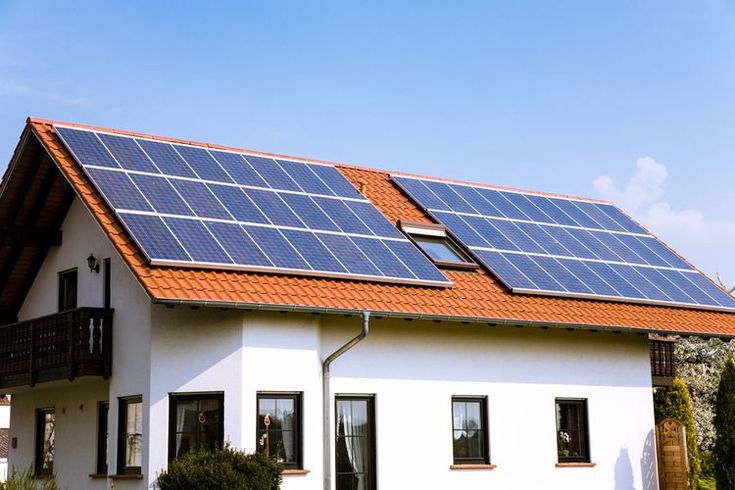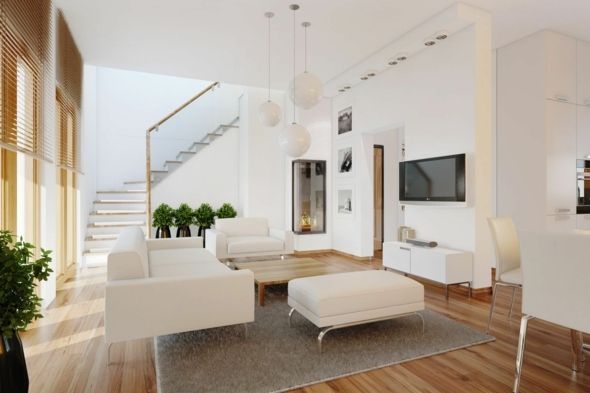Eco-Inspired Elegance: Redefining Home Interiors with Sustainable Style
Eco-Inspired Elegance: Redefining Home Interiors with Sustainable Style – In today’s design landscape, the fusion of aesthetics and sustainability has given rise to a revolutionary trend: eco-friendly home interior design. Homeowners and designers alike are increasingly embracing eco-inspired elegance—a design philosophy that seamlessly integrates sustainable materials, energy-efficient practices, and cutting-edge style. This article will explore how eco-friendly home interior design is reshaping living spaces into havens that not only look sophisticated but also honor our planet.
With a growing global focus on environmental responsibility, eco-friendly interior design has moved from niche to mainstream. It is a conscious effort to balance functionality, beauty, and environmental stewardship. The journey to a sustainable home interior starts with a vision—one that prioritizes natural materials, energy conservation, and innovative design solutions that create healthier living environments. Whether you are renovating your current home or building a new one, adopting a sustainable style can lead to long-term benefits, including improved indoor air quality, reduced utility bills, and an enhanced connection with nature.
In this comprehensive guide, we delve into the essential elements of eco-inspired elegance. We will discuss the key principles of eco-friendly design, outline innovative trends in sustainable interiors, and provide actionable steps for transforming your living space. By the end of this article, you’ll be equipped with the knowledge and inspiration needed to create an interior that is not only environmentally responsible but also exudes modern elegance and charm.
Understanding the Essence of Eco-Friendly Home Interior Design
At its core, eco-friendly home interior design is about harmonizing the natural world with modern living. It challenges traditional design paradigms by incorporating renewable, recycled, or upcycled materials, energy-efficient appliances, and environmentally conscious practices. The philosophy is simple: design spaces that minimize environmental impact while maximizing comfort and style.
Core Principles
- Sustainable Materials: One of the foundational aspects is the selection of materials that are renewable, recyclable, or sustainably sourced. This includes using reclaimed wood, bamboo flooring, recycled glass, and eco-friendly fabrics.
- Energy Efficiency: Designing for energy conservation is key. Integrating energy-efficient lighting, appliances, and HVAC systems reduces energy consumption and utility bills.
- Health and Well-Being: Eco-friendly designs often prioritize the use of non-toxic, low-VOC (volatile organic compounds) paints and finishes. This commitment to healthier indoor environments not only protects the planet but also enhances the quality of life for the inhabitants.
- Waste Reduction: Embracing a zero-waste mindset means planning for sustainable waste management during renovations and construction. This might include repurposing existing materials or incorporating recycling systems in your home.
By embedding these principles into your design process, you can create a home that resonates with eco-friendly values while offering a visually stunning and comfortable environment.
Key Elements of Sustainable Style
Sustainable style is not merely a trend; it’s a comprehensive approach to design that honors both aesthetic appeal and environmental integrity. Here are some key elements that define this movement:
1. Natural Materials and Textures
Using natural materials is the hallmark of eco-friendly home interior design. Materials like bamboo, cork, reclaimed wood, and natural stone not only provide durability but also bring an organic warmth to any space. These elements help create a tactile, inviting atmosphere that contrasts beautifully with modern minimalist design.
2. Energy-Efficient Lighting and Appliances
Lighting plays a crucial role in defining the mood of a room. By incorporating LED lighting, solar-powered fixtures, and smart lighting systems, you can reduce energy consumption while adding an elegant ambiance. Energy-efficient appliances further ensure that your home remains both stylish and environmentally responsible.
3. Eco-Friendly Paints and Finishes
Traditional paints and finishes can release harmful chemicals into your living space. Eco-friendly alternatives, such as low-VOC or zero-VOC paints, are not only better for your health but also contribute to a sustainable environment. These products come in a variety of finishes, ensuring that you do not have to compromise on style.
4. Water Conservation Features
Sustainable home interiors also focus on conserving water. This can include installing low-flow faucets, dual-flush toilets, and rainwater harvesting systems. These features not only reduce your home’s ecological footprint but also lower utility costs over time.
5. Biophilic Design
Biophilic design emphasizes the connection between humans and nature. This can be achieved by incorporating indoor plants, living green walls, and large windows that allow natural light to flood your spaces. Biophilic elements not only enhance the aesthetic appeal but also improve mental health and well-being.
These key elements, when woven together, result in an interior that is both visually captivating and profoundly sustainable. The challenge is to strike a balance between eco-friendly functionality and elegant design, ensuring that each element complements the overall aesthetic.
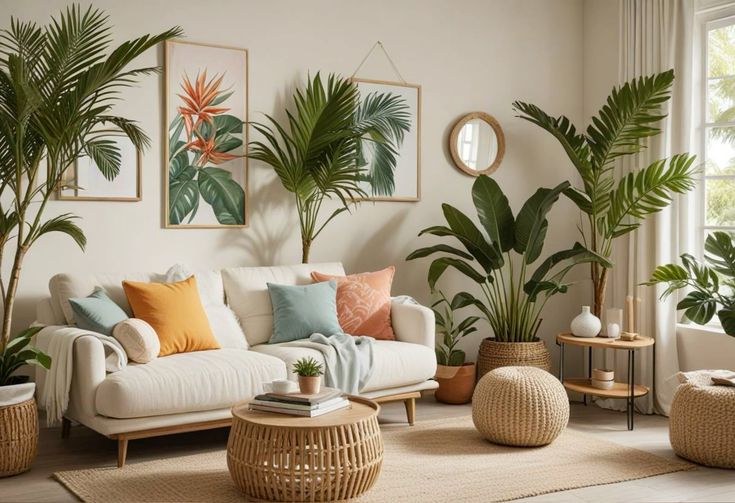
Merging Functionality and Aesthetics: The Heart of Eco-Inspired Elegance
Eco-inspired elegance is not about sacrificing beauty for sustainability; it’s about merging the two to create spaces that are both practical and stunning. Modern eco-friendly interiors demonstrate that sustainability can be chic and sophisticated.
The Role of Minimalism
Minimalism is a central theme in eco-friendly design. By reducing clutter and focusing on quality over quantity, minimalism promotes a mindful approach to living. Clean lines, open spaces, and a restrained color palette not only enhance the visual appeal of a room but also make it easier to integrate sustainable elements. Minimalism encourages the use of multi-functional furniture and design elements that serve both aesthetic and practical purposes, reducing the need for excess materials and waste.
Embracing Modern Technology
Advancements in technology have made it easier to incorporate sustainable practices without compromising on luxury. Smart home systems can automate lighting, heating, and cooling, optimizing energy use and reducing waste. These technologies allow homeowners to monitor and adjust their consumption in real time, further contributing to an eco-friendly lifestyle. When integrated with sleek, modern design, technology becomes a seamless part of the home’s elegance.
Customization and Personal Expression
One of the most exciting aspects of eco-friendly home interiors is the ability to tailor every detail to reflect personal style. Eco-inspired elegance encourages the use of bespoke pieces crafted from sustainable materials. Artisans around the world are now producing unique, handcrafted items that celebrate local materials and traditional techniques, infusing modern interiors with character and authenticity.
Blending Old and New
Sustainable design often involves repurposing or upcycling vintage elements. Incorporating antique furniture or reclaimed wood accents can add a sense of history and depth to a space, creating a dialogue between the past and the present. This blend of old and new not only supports sustainability but also results in a layered, intriguing aesthetic that evolves over time.
By thoughtfully combining these elements, designers and homeowners can create interiors that are both sustainable and stunning—spaces that tell a story of environmental respect, personal creativity, and timeless elegance.
Innovative Trends in Eco-Friendly Home Interiors
The world of eco-friendly interior design is constantly evolving. New trends continue to emerge as designers push the boundaries of sustainability while striving for contemporary elegance. Here are some of the most exciting trends shaping eco-friendly home interiors today:
1. Biophilic Design and Green Spaces
Biophilic design is more than a buzzword—it’s a movement that celebrates the intrinsic connection between humans and nature. Designers are increasingly incorporating indoor gardens, living walls, and even small water features that mimic natural environments. This approach not only enhances visual appeal but also improves indoor air quality and promotes relaxation and well-being.
2. Reclaimed and Upcycled Materials
The trend towards reclaimed and upcycled materials is gaining momentum. Designers are finding creative ways to repurpose old wood, metal, and glass, transforming them into striking modern features. Upcycling not only reduces waste but also brings unique, one-of-a-kind pieces into your home, each with its own story.
3. Smart Home Integration
Sustainability meets technology in the form of smart home integration. Energy management systems, automated lighting, and climate control not only reduce energy consumption but also offer unparalleled convenience. These systems can be controlled remotely via smartphones and other devices, ensuring that your home remains efficient and responsive to your needs.
4. Sustainable Art and Decor
Eco-friendly design extends beyond structural elements. There is a growing appreciation for art and decor that utilize sustainable materials and methods. From sculptures made of recycled metal to textiles crafted from organic fibers, eco-conscious decor adds an artistic flair to your home while aligning with environmental values.
5. Natural Color Palettes
Natural, earthy color palettes are becoming a hallmark of sustainable interiors. Hues inspired by nature—such as soft greens, warm browns, and subtle blues—create a calming atmosphere that reflects the outdoor world. These colors pair beautifully with natural textures and organic materials, enhancing the overall sense of tranquility and balance.
These trends underscore a broader movement within interior design that values both environmental responsibility and innovative aesthetics. As technology and design practices continue to evolve, the possibilities for eco-friendly interiors are virtually limitless.
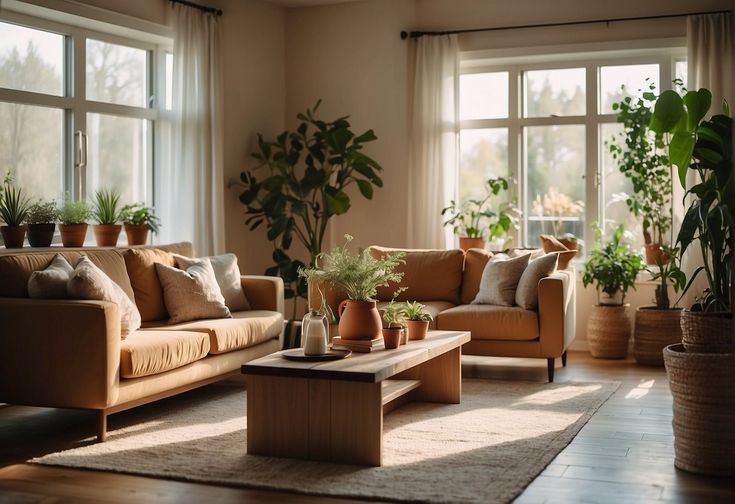
The Benefits of Eco-Friendly Interior Design
Transitioning to an eco-friendly home interior is not only an investment in style but also in health, economy, and the environment. Here are some compelling benefits of embracing a sustainable design approach:
Environmental Impact
The most obvious benefit of eco-friendly home interiors is the reduction in environmental impact. By choosing renewable materials, reducing waste, and incorporating energy-efficient systems, you actively contribute to the conservation of natural resources and a decrease in greenhouse gas emissions. Sustainable design practices help mitigate the effects of climate change, making your home part of a larger solution.
Healthier Living Spaces
Eco-friendly design prioritizes non-toxic materials and improved indoor air quality. This means fewer chemicals and pollutants in your living space, which can reduce respiratory problems, allergies, and other health issues. A home that is designed with your health in mind is a sanctuary—a place where you can thrive both physically and emotionally.
Long-Term Cost Savings
While the initial investment in sustainable materials and energy-efficient systems can sometimes be higher, the long-term savings are significant. Reduced utility bills, lower maintenance costs, and increased durability of eco-friendly materials often lead to substantial financial benefits over time. Additionally, homes with eco-friendly features tend to have higher resale values as more buyers look for sustainable living options.
Enhanced Aesthetic Appeal
Eco-friendly interiors are not just about function—they are also about form. By embracing natural materials, earthy tones, and innovative design solutions, you create a home that is both beautiful and timeless. The aesthetic appeal of sustainable design lies in its ability to merge simplicity with sophistication, resulting in interiors that are inviting, warm, and uniquely personal.
Social Responsibility
Adopting an eco-friendly approach is a statement of social responsibility. It demonstrates a commitment to environmental stewardship and inspires others to follow suit. In a world where every action counts, making sustainable choices in home design can contribute to a broader movement toward a greener, more responsible future.
The convergence of these benefits illustrates why eco-inspired elegance is more than just a trend—it is a lifestyle choice that enhances the quality of life while protecting the planet.
Practical Steps to Achieve an Eco-Inspired Home Interior
Ready to transform your home with sustainable style? Here are some practical steps to help you embark on your eco-friendly interior design journey:
1. Conduct a Home Audit
Start by assessing your current home’s energy use, waste patterns, and material choices. Identify areas where you can improve efficiency—whether it’s replacing old appliances, sealing drafts, or updating insulation. A thorough audit will provide a roadmap for your sustainable renovations.
2. Set Clear Goals
Establish what you want to achieve with your eco-friendly home interior design. Is your priority to reduce energy consumption, improve indoor air quality, or simply update your style with sustainable elements? Clear goals will guide your design decisions and help you prioritize investments.
3. Choose Sustainable Materials
When selecting materials, research their environmental impact. Opt for renewable, recycled, or reclaimed materials whenever possible. Look for certifications such as FSC (Forest Stewardship Council) for wood products or GREENGUARD for low-emission products to ensure you are making the most sustainable choices.
4. Incorporate Energy-Efficient Technologies
Invest in energy-efficient lighting, appliances, and heating/cooling systems. Consider smart home technologies that allow you to monitor and control your energy usage. These upgrades not only reduce your carbon footprint but also lead to long-term savings on energy bills.
5. Prioritize Non-Toxic Finishes
Ensure that your paints, varnishes, and other finishes are eco-friendly and non-toxic. This is essential for maintaining healthy indoor air quality and reducing your exposure to harmful chemicals.
6. Embrace Biophilic Elements
Integrate elements of nature into your design by adding indoor plants, natural wood accents, and large windows that maximize natural light. Biophilic design not only enhances aesthetic appeal but also contributes to a healthier, more relaxing living environment.
7. Work with Sustainable Professionals
Seek out designers, architects, and contractors who specialize in eco-friendly projects. Their expertise can help you navigate the complexities of sustainable design and ensure that every aspect of your project aligns with your environmental values.
By following these steps, you can create a home that reflects your commitment to the environment while exuding modern elegance and style.
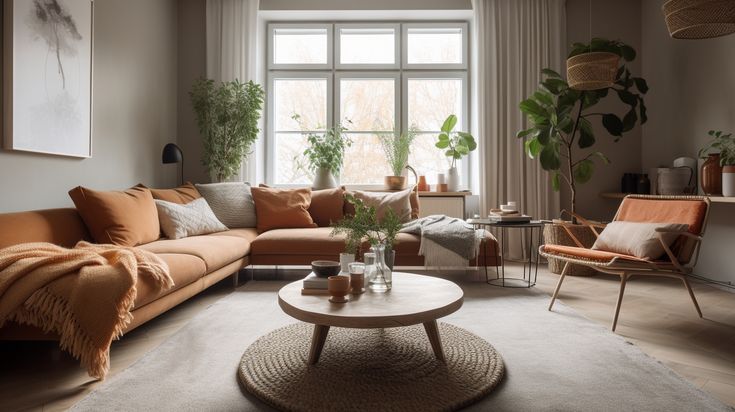
Overcoming Challenges in Sustainable Home Design
While the benefits of eco-friendly home interior design are clear, the journey toward sustainability can sometimes be fraught with challenges. Here are some common obstacles and strategies to overcome them:
1. Higher Initial Costs
One of the primary concerns for many homeowners is the higher upfront cost associated with sustainable materials and technologies. However, it’s important to view these expenses as long-term investments. Energy savings, reduced maintenance, and increased home value often offset the initial expenditure over time. Consider phased renovations to spread out the costs.
2. Limited Availability of Sustainable Products
Finding the right eco-friendly products can sometimes be challenging, especially in regions where sustainable options are limited. Research online, connect with local sustainable design communities, and attend green building expos to discover suppliers and innovative products that align with your vision.
3. Balancing Aesthetics with Functionality
Striking the perfect balance between a stunning design and environmental responsibility requires careful planning. Collaborate closely with designers who understand both aesthetics and sustainability. This ensures that your home is not only visually appealing but also meets rigorous eco-friendly standards.
4. Navigating Certifications and Standards
The world of sustainable design is filled with various certifications and standards, which can be confusing. Take the time to educate yourself about the most relevant certifications—such as LEED (Leadership in Energy and Environmental Design) or Energy Star—and incorporate these into your project criteria. This can provide peace of mind that your design choices meet established environmental benchmarks.
Overcoming these challenges requires perseverance, creativity, and a willingness to adapt. With careful planning and the right support, you can transform obstacles into opportunities for innovation.
The Future of Eco-Friendly Home Interiors
As the world continues to grapple with environmental challenges, the future of home interior design is unmistakably green. Here are some emerging trends and predictions for the future of eco-friendly home interiors:
1. Integration of Advanced Technologies
Smart homes and sustainable design will continue to merge. Expect further integration of AI-driven energy management systems, renewable energy solutions like solar panels and battery storage, and innovations that reduce waste during construction and renovation.
2. Increased Use of Recycled and Upcycled Materials
As consumers become more environmentally conscious, the demand for reclaimed and upcycled materials will grow. Designers will increasingly source materials that tell a story of sustainability, repurposing items that might otherwise end up as waste.
3. Customization Through 3D Printing and Local Production
Advancements in 3D printing technology are poised to revolutionize sustainable design by allowing for the production of custom, on-demand furniture and decor using eco-friendly materials. This trend supports local production and minimizes transportation-related emissions.
4. Holistic Design Approaches
The future of eco-friendly interiors lies in holistic design—where every element, from building materials to interior decor, is selected with both environmental impact and human well-being in mind. This approach not only creates more sustainable spaces but also nurtures healthier, happier lifestyles.
The evolution of eco-friendly home interiors promises a future where style and sustainability coexist seamlessly, offering homeowners innovative ways to reduce their environmental footprint without compromising on design excellence.
Conclusion
Eco-inspired elegance is more than a design philosophy—it’s a movement toward a sustainable future. By redefining home interiors through the lens of environmental responsibility, homeowners and designers are creating spaces that are not only aesthetically pleasing but also kind to the planet. From selecting natural materials and energy-efficient systems to embracing minimalist aesthetics and cutting-edge technology, every element of eco-friendly home interior design contributes to a healthier, more sustainable world.
As we continue to navigate the challenges of climate change and resource scarcity, the shift toward sustainable style offers hope and inspiration. Whether you are just beginning your eco-friendly design journey or looking to enhance your existing space, remember that every small change makes a difference. Embrace eco-inspired elegance, and let your home be a testament to the harmonious blend of style, functionality, and sustainability.
By making conscious design choices today, we pave the way for a future where our living spaces reflect a deep respect for nature and a commitment to a greener planet. Transform your home into an eco-friendly sanctuary, and join the global movement toward sustainable living—one elegant, thoughtful design at a time.

